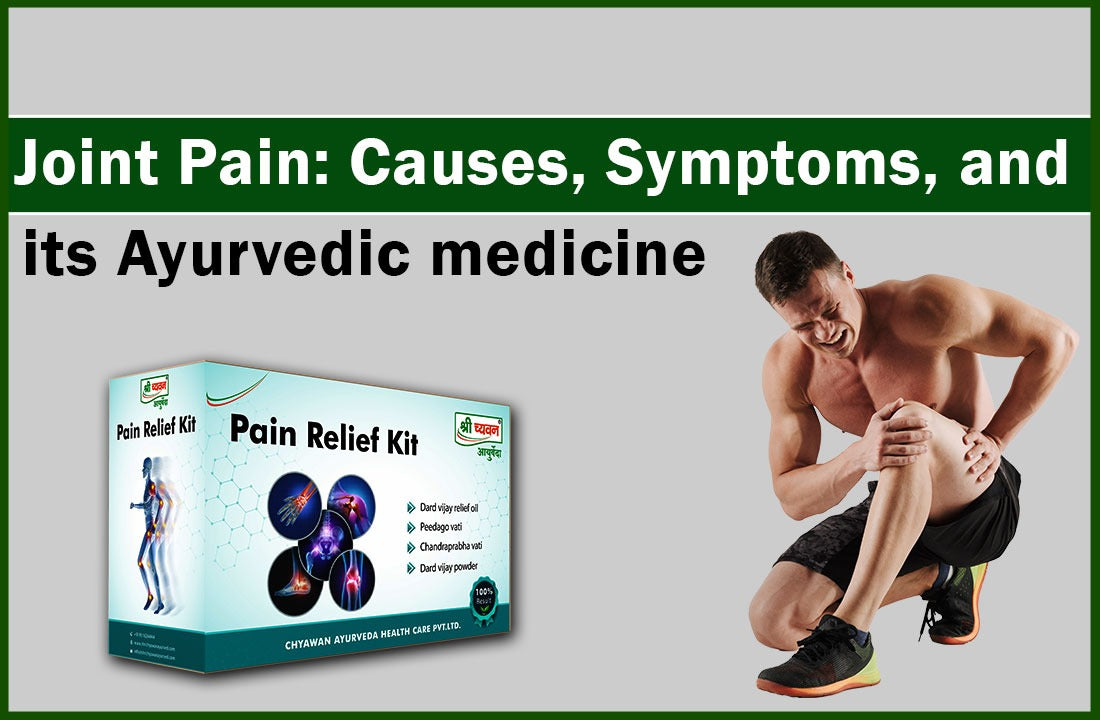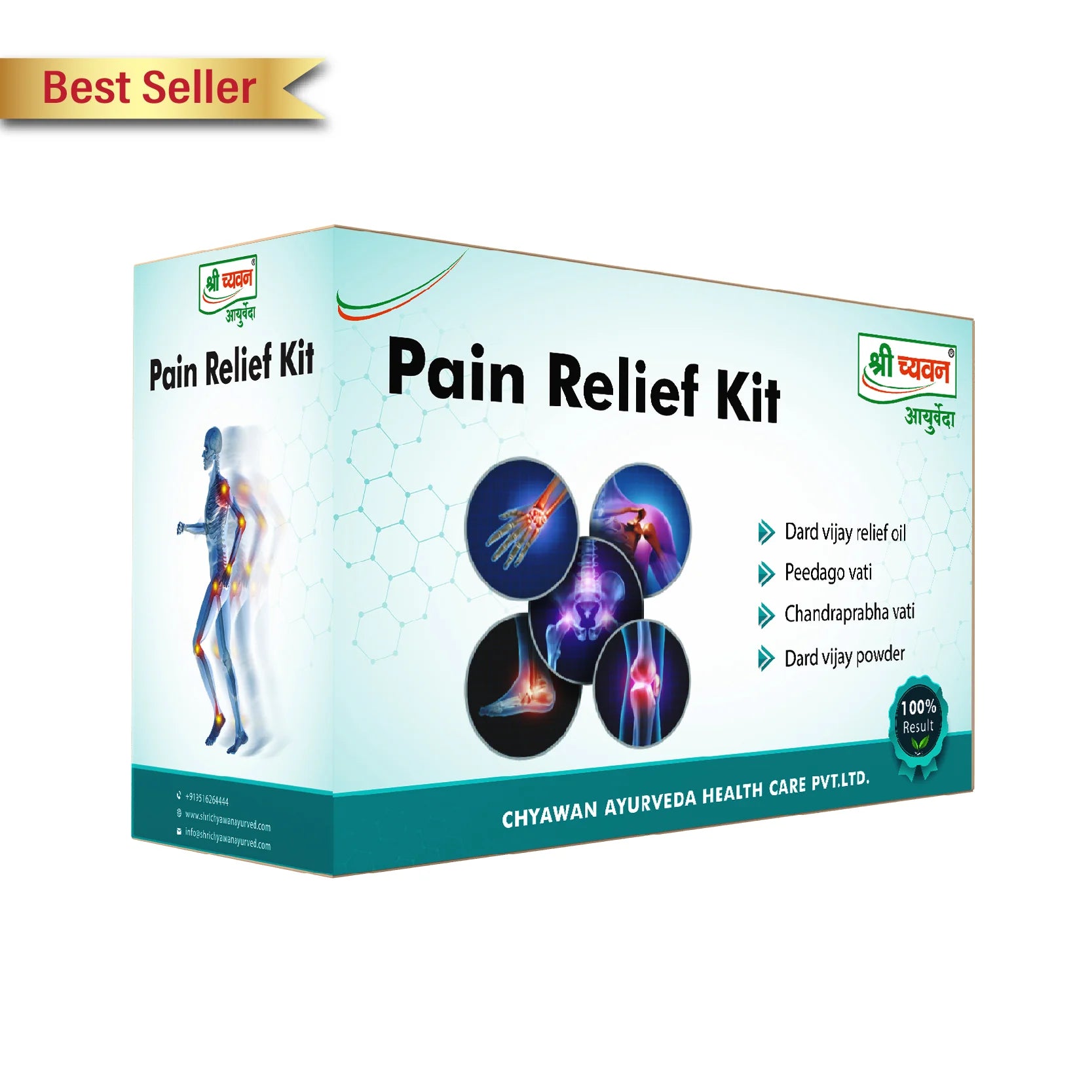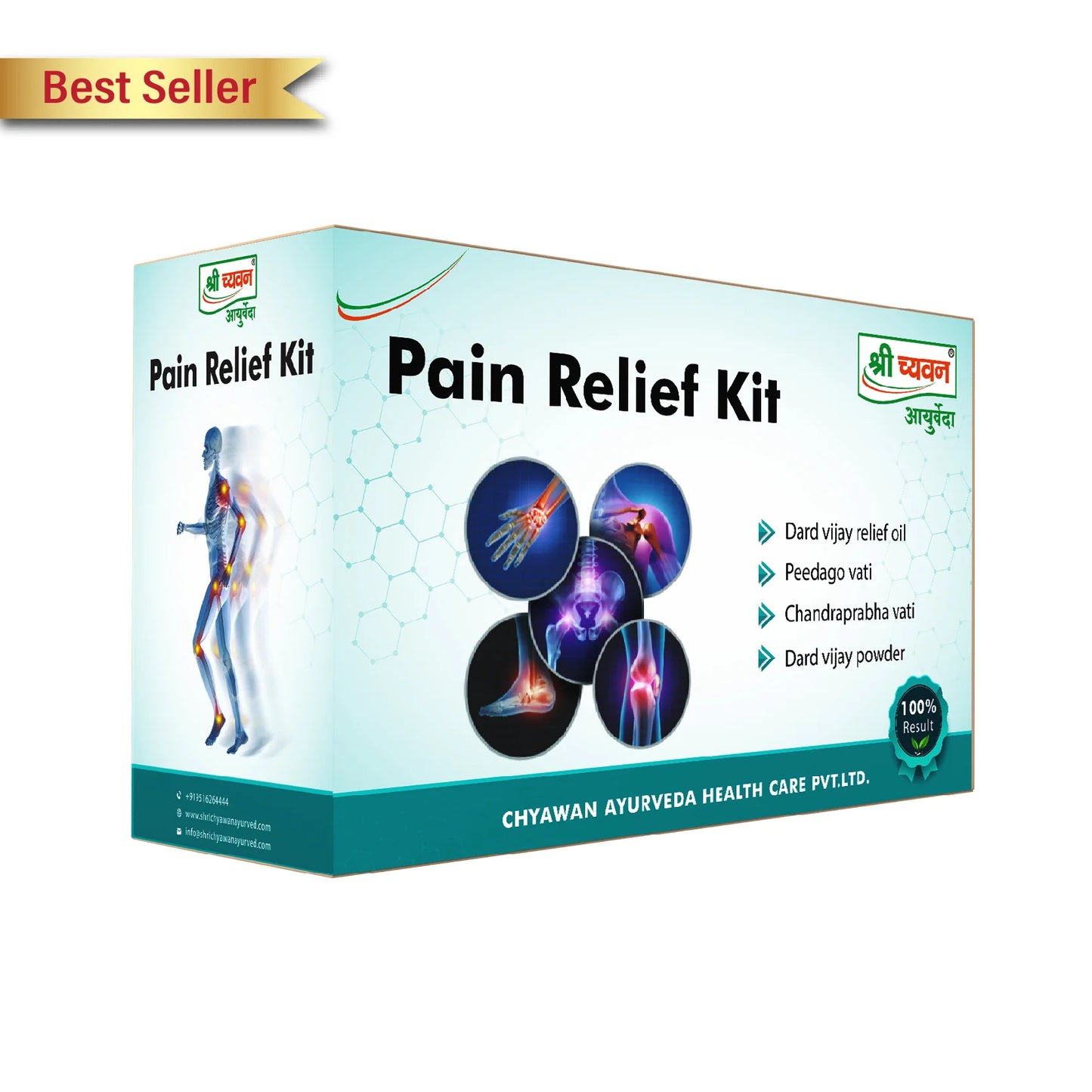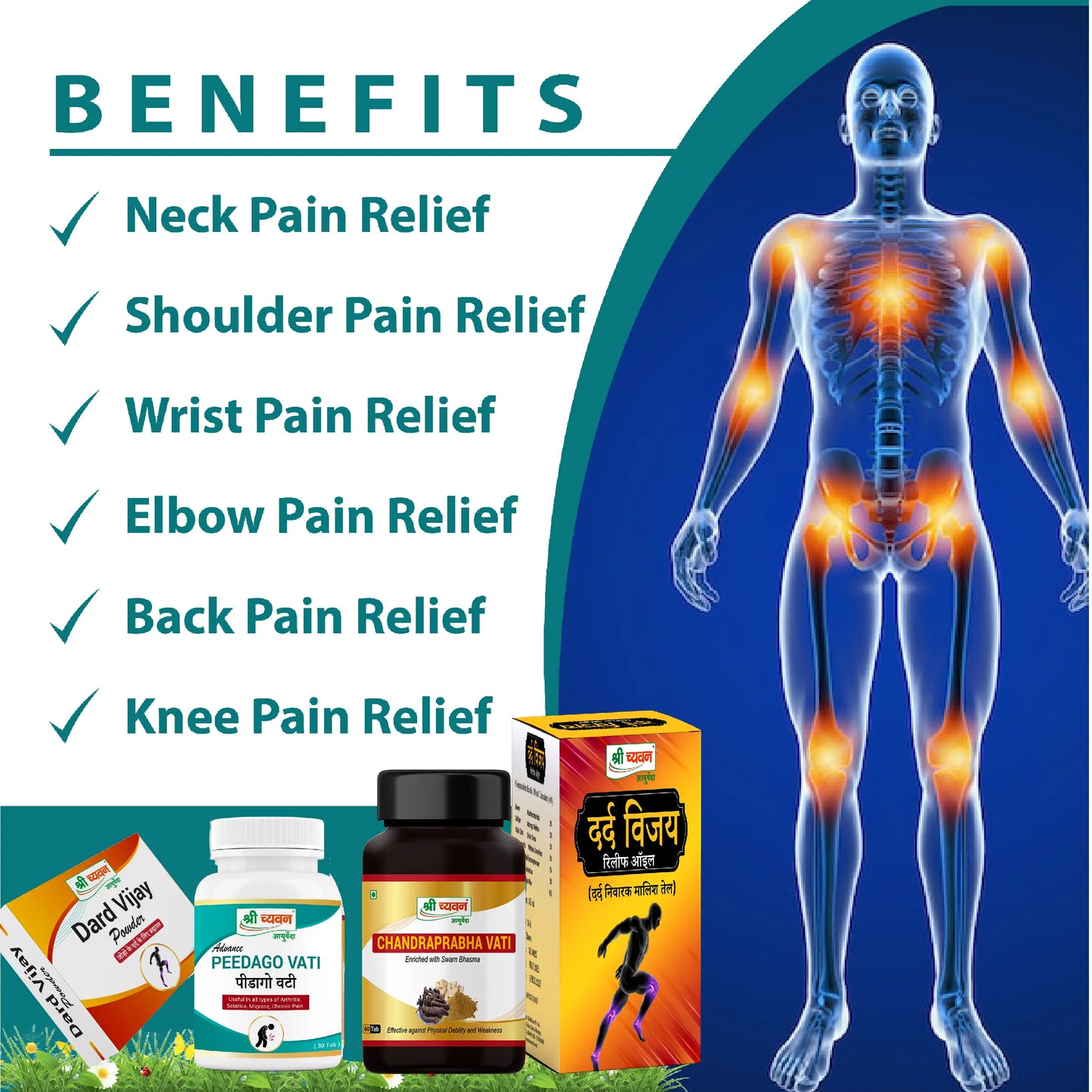Joint pain is a discomfort or ache in one or more of the body's joints, where bones meet and allow movement. It can result from various causes, including arthritis, injuries, overuse, infections, autoimmune diseases, and more. Common symptoms include pain, swelling, stiffness, and reduced range of motion in the affected joint. Treatment options depend on the underlying cause and may include medication, physical therapy, lifestyle changes, and, in severe cases, surgery. Proper diagnosis and management are essential to alleviate joint pain and improve quality of life.
In other words, joint pain refers to discomfort, soreness, or aching sensations in one or more of the body's joints. Joints are the connections between bones that allow for movement and flexibility. When these joints become painful, it can significantly affect a person's mobility, daily activities, and overall quality of life.
What are the causes of Joint Pain?
Joint pain can have various causes, ranging from mild to severe. Here are some common causes of joint pain:
-
Arthritis: Arthritis is a leading cause of joint pain and includes conditions like osteoarthritis (wear and tear of joint cartilage), rheumatoid arthritis (an autoimmune disease), gout (caused by uric acid crystals in the joints), and others.
-
Injuries: Trauma or injuries, such as sprains, strains, fractures, or dislocations, can lead to joint pain. These injuries can damage the joint or surrounding tissues.
-
Overuse: Repetitive movements or overuse of a joint, often seen in certain sports or occupational activities, can cause joint pain. This is known as overuse or repetitive strain injury.
-
Infections: Bacterial or viral infections can sometimes affect the joints, causing inflammation and pain. Septic arthritis is an example of a joint infection.
-
Autoimmune Diseases: Conditions like lupus, psoriatic arthritis, and ankylosing spondylitis are autoimmune diseases that can lead to joint pain as the immune system mistakenly attacks joint tissues.
-
Degenerative Conditions: Besides osteoarthritis, other degenerative conditions, such as degenerative disc disease, can result in joint pain.
-
Metabolic Disorders: Certain metabolic disorders, like hemochromatosis or Wilson's disease, can lead to joint pain due to the buildup of minerals or toxins in the joints.
-
Tendinitis: Inflammation of the tendons, which connect muscles to bones, can cause joint pain, particularly in areas where tendons cross over joints.
-
Bursitis: Inflammation of the bursae, small fluid-filled sacs that cushion joints, can result in joint pain, often due to repetitive motions or pressure on the joint.
-
Lupus: Systemic lupus erythematosus (SLE) is an autoimmune disease that can affect various body systems, including the joints, leading to pain and inflammation.
-
Psoriasis: Psoriasis, a skin condition, is associated with a form of arthritis called psoriatic arthritis, which causes joint pain and inflammation.
- Other Causes: Joint pain can also be caused by factors like hormonal changes, medications, nerve disorders, and even referred pain from problems in nearby organs.
What are the symptoms of Joint Pain?
Joint pain can manifest with various symptoms, and the specific symptoms can vary depending on the underlying cause and the affected joint. However, some common symptoms of joint pain include:
-
Pain: The most prominent symptom of joint pain is discomfort or pain in the affected joint(s). The pain can range from mild to severe and may be described as aching, throbbing, stabbing, or burning.
-
Swelling: Inflammation often accompanies joint pain, resulting in swelling or puffiness around the affected joint. The joint may appear larger than usual and feel warm to the touch.
-
Stiffness: Joint pain is frequently accompanied by stiffness, which can make it challenging to move the affected joint. Stiffness is often more pronounced in the morning or after periods of inactivity.
-
Reduced Range of Motion: Joint pain can lead to a decreased ability to move the joint through its full range of motion. This limitation in movement can affect daily activities.
-
Tenderness: The affected joint may be tender to the touch, and pressing on or around the joint may elicit discomfort or pain.
-
Weakness: Joint pain can result in weakness in the muscles surrounding the affected joint, further reducing mobility and function.
-
Clicking or Popping Sounds: Some individuals with joint pain may experience clicking, popping, or cracking sounds when moving the joint. These noises can be due to changes in the joint's structure or fluid.
- Redness: In cases of severe inflammation, the skin over the affected joint may become red or flushed.
-
Fatigue: Chronic joint pain can lead to fatigue and a decreased ability to engage in physical activities.
- Difficulty in Daily Activities: Depending on the location and severity of the joint pain, individuals may have difficulty performing everyday tasks, such as walking, climbing stairs, or grasping objects.
Joint Pain complete treatment in Ayurveda:
Ayurveda, the traditional system of medicine from India offers holistic approaches to managing and treating joint pain. Treatment in Ayurveda is personalized based on an individual's dosha (constitution), the underlying cause of joint pain, and other factors.
Shri Chyawan Ayurveda has carefully formulated an ayurvedic medicine for joint pain - Pain Relief Kit to provide relief from all kinds of Joint, Muscle, Body Pain, etc. It includes all herbal and natural ingredients and is safe to use for all. Are you facing problems such as Back Pain, Knee Pain, Sciatica, Cervical, Slip-disk or any other joint or muscle related pain or cramps, then order Shri Chyawan Ayurveda's Pain Relief Kit today and get rid of all types of pain.
It consists of:
- Dard Vijay Powder: Shri Chyawan Ayurveda’s Dard Vijay Powder provides relief from joint, muscular pain, arthritis etc. Intake of this powder helps in reducing the swelling on the joints and gives relief from the pain. It is prepared using all herbal and natural ingredients and is safe to use and does not have any side effects.
Ingredients: Dard Vijay Powder consists of ingredients like Kolichikam Liutium, Raisins Comunis, Pipli, Chitrak Haritaki, Piper of Cinerum, Adark, and Arbi Babul.
How to use: Consume 2-3 gm every morning and evening post breakfast and snacks respectively.
- Chandraprabha Vati: It reduces the level of Uric acid, that ultimately helps to provide relief from the pain. It’s an ideal pain relief ayurvedic medicine.
Ingredients: Chandraprabha Vati consists of Sandalwood, Daru Haridra, Amla, Debdaru, Camphor, Cinnamon.
How to use: Consume 1 tablet at night before going to bed.
- Peedago Vati: It is an ayurvedic pain killer but unlike the one's available in the market. It is one of the most effective ayurvedic pain killer tablets helps in providing relief from joint pain and does not have any side-effects.
Ingredients: It consists of Siddha Kuchla, Suddha Bhilawa (Strychnousnux-vomicca) Amla, Harda, Baheda, Saunth, Amba Haldi, Pipal lakh (Ficus religiosa), Nagar Motha, Methi, Maal Sindoor, Hing, Ajmoda, Kala Peeper, Ashwagandha.
How to use: Consume 1 tablet every morning and evening, post breakfast and snacks respectively.
- Dard Vijay Oil: A gentle massage with this oil gives you an instant relief from any kind of joint or muscle pain. It is also recommended as the best ayurvedic oil for joint pain.
Ingredients: It consists of Neem, Sahajan, Chinchini, Ashwagandha, Methi, Imli, Sarso oil, Neem oil, Camphor, Peppermint.
How to use: Gently massage using this oil twice a day.
Other remedies to treat Joint Pain:
- Dietary Recommendations:
- An Ayurvedic practitioner may recommend dietary changes based on your dosha and the nature of your joint pain.
- Anti-inflammatory foods like ginger, turmeric, and garlic are often encouraged.
- Avoiding or reducing foods that can aggravate joint pain, such as fried and processed foods, excessive dairy, and red meat.
- Herbal Remedies:
- Ayurvedic herbs are commonly used to manage joint pain. Some popular choices include:
- Turmeric: Known for its anti-inflammatory properties, it can be consumed in various forms, such as turmeric milk or supplements.
- Boswellia: Also called Indian frankincense, it has anti-inflammatory effects.
- Ashwagandha: An adaptogenic herb that may help reduce pain and inflammation.
- Ayurvedic formulations (Churna or Kwatha) tailored to your specific condition may also be recommended.
- Panchakarma Therapy:
- Panchakarma is a detoxification and rejuvenation therapy in Ayurveda.
- Treatments like Abhyanga (massage with medicated oils), Swedana (herbal steam therapy), and Basti (medicated enema) can help eliminate toxins and reduce pain.
- Lifestyle Modifications:
- Rest and gentle exercise are crucial. Avoid excessive strain on the affected joint.
- Yoga and specific asanas (postures) can help improve joint flexibility and strength while respecting your condition.
- Practicing stress-reduction techniques like meditation and deep breathing can also aid in managing pain.
- Ayurvedic Oils and Compresses:
- External application of Ayurvedic oils like Mahanarayana oil, Vishagarbha oil, or Bala oil may provide relief when massaged onto the painful joint.
- Warm herbal compresses (Pinda Sweda) can also alleviate pain and inflammation.
- Agni and Digestive Health:
- Ayurveda emphasizes the role of a balanced digestive system (agni) in overall health. Improving digestion through dietary adjustments and herbs can support the healing process.
- Consulting an Ayurvedic Practitioner:
- It's important to consult with a qualified Ayurvedic practitioner who can assess your specific condition, dosha imbalance, and prescribe a personalized treatment plan.
- Long-Term Management:
- Ayurvedic treatment for joint pain is often seen as a long-term process. Consistency in following dietary and lifestyle recommendations is key to maintaining joint health.
In conclusion, Ayurveda offers a holistic and personalized approach to treating joint pain, addressing not only the symptoms but also the underlying imbalances in the body. By considering an individual's dosha constitution, the nature of joint pain, and various other factors, Ayurvedic treatments aim to restore balance, reduce inflammation, and promote overall joint health.
Through dietary modifications, herbal remedies, detoxification therapies, lifestyle adjustments, and stress management techniques, Ayurveda seeks to provide relief from joint pain and improve the quality of life. It emphasizes the interconnectedness of the mind, body, and spirit in achieving lasting well-being.
However, it's important to remember that Ayurvedic treatment for joint pain is a comprehensive and long-term process that requires guidance from a qualified Ayurvedic practitioner. Additionally, it can complement conventional medical care, and individuals with severe or chronic joint conditions should consult with both Ayurvedic and Western healthcare professionals to develop a well-rounded treatment plan.









